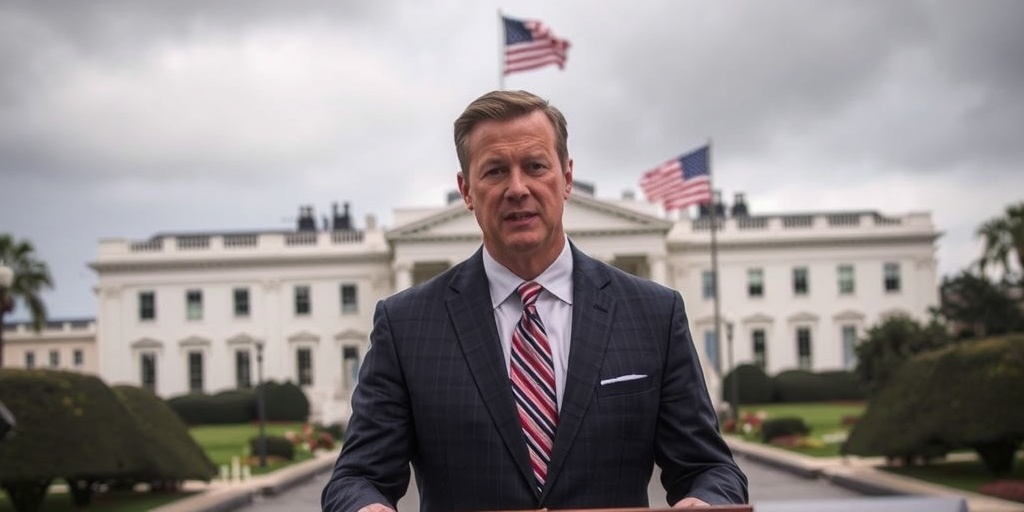Now Reading: McMahon Launches Final Mission for Education Department
-
01
McMahon Launches Final Mission for Education Department
McMahon Launches Final Mission for Education Department

Linda McMahon’s Initial Actions as Secretary of Education Signal Major Changes Ahead
Linda McMahon’s inaugural email to Education Department staff shortly after her swearing-in has sent ripples of concern and anticipation throughout the education community. Her communication, labeled “Our Department’s Final Mission,” reflects an aggressive approach to enacting the Trump administration’s objective of potentially dismantling the Department of Education. This bold declaration indicates that drastic changes to the education system might be on the horizon, unsettling many federal workers, educators, and school administrators.
In her email, McMahon articulated a clear intention to prepare the department for its “final mission,” asserting that the envisioned changes would significantly disrupt the current status quo. “This is our opportunity to perform one final, unforgettable public service to future generations of students,” she stated, underscoring the urgency and importance of the work ahead.
McMahon has vowed to enhance American education, introducing a vision that pivots toward increased state oversight and emphasizes patriotic education. Her directive suggests a radical reorganization of the agency’s structure, budgets, and operations, as she laments the failure of the department since its inception in 1980, during which over $1 trillion has been spent. However, she stopped short of specifying how these changes would empower state and local school districts, despite noting their increased funding over the same period.
Critics such as Becky Pringle, president of the National Education Association, have already expressed trepidation regarding McMahon’s leadership and the potential rollback of protections for students, particularly those with disabilities and from underprivileged backgrounds. “America is about progress,” Pringle emphasized, voicing her concern that the administration’s agenda might revert to a time before essential safeguards were in place for vulnerable student populations.
President Trump has been forthright in his disdain for the Education Department, characterizing it as a “big con job” and expressing his desire to see it abolished. His remarks have fueled skepticism about the current administration’s commitment to public education, especially given McMahon’s initial stance of ambitious reform intertwined with a clear indication of closing the department.
During her confirmation hearing, McMahon presented a more nuanced agenda that included advocating for expanded vocational programs in high schools and promoting diverse educational options to alleviate burdensome college debt. However, upon officially assuming office, she has escalated her rhetoric, referring to the Department of Education as a failed enterprise.
The swift change in McMahon’s messaging has caused concern among her team, with some officials questioning the implications for agency morale amidst ongoing bureaucratic upheaval. Reports suggest that some department employees feel her email serves as a subtle suggestion to consider early retirement or resignation. Government employees across the board have been offered severance packages since the administration’s commencement, adding to the anxieties about job security within the department.
Randi Weingarten, president of the American Federation of Teachers, has also criticized McMahon’s apparent contradictions regarding education policies. While McMahon previously promoted the enhancement of high school vocational training aimed at empowering graduates, her latest communications imply a pivot towards aligning postsecondary education with job market demands, raising doubts about her commitment to providing comprehensive educational opportunities.
As the education landscape braces for a potential upheaval, public sentiment appears to weight heavily against closing the Education Department. A recent NPR/PBS/Marist poll indicates that approximately two-thirds of Americans oppose the elimination of the department, reflecting widespread concern among parents and community members regarding the direction in which public education is headed.
With protests, marches, and rallies organized in response to McMahon’s initiatives illustrating a push for the preservation of public education, it is clear that these developments have sparked a significant mobilization of educators, parents, and advocates dedicated to advocating for their children’s right to quality education. This grassroots response emphasizes a growing resolve to protect the progress made in education over the years, as many fear that McMahon’s reforms might lead to a regression rather than advancement.
As McMahon leads the Department of Education towards its purported ‘final mission,’ the education community remains vigilant, grappling with the implications of her directives while advocating fiercely for the educational needs and rights of all students across the nation. The coming days and weeks will be crucial in determining whether McMahon’s mission resonates with the values of equity and access in education that so many have fought hard to uphold.
Stay Informed With the Latest & Most Important News
Previous Post
Next Post
-
 01New technology breakthrough has everyone talking right now
01New technology breakthrough has everyone talking right now -
 02Unbelievable life hack everyone needs to try today
02Unbelievable life hack everyone needs to try today -
 03Fascinating discovery found buried deep beneath the ocean
03Fascinating discovery found buried deep beneath the ocean -
 04Man invents genius device that solves everyday problems
04Man invents genius device that solves everyday problems -
 05Shocking discovery that changes what we know forever
05Shocking discovery that changes what we know forever -
 06Internet goes wild over celebrity’s unexpected fashion choice
06Internet goes wild over celebrity’s unexpected fashion choice -
 07Rare animal sighting stuns scientists and wildlife lovers
07Rare animal sighting stuns scientists and wildlife lovers





















